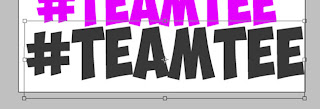6. What have you learnt about technologies from the process of constructing this product?
From first using Photoshop, InDesign & blogger I’ve made major improvements from when I first started using the programme. Blogger has helped me in shaping my process in producing my product. From using blogger I have been able to keep in track with what I’m doing and how I am using it to produce my magazine, blogger has helped me maintain control by completing my blogs week to week.
I have made improvements in using Photoshop while editing my images that I’ve been using for my media product. Photoshop gave me the opportunities to make images I had taken better than they were before like the ‘Lasso tool, contrast/brighten tool, quick selection tool and the magic wand’. By constantly using Photoshop I became familiar with the tools which helped me to produce better images when I finished editing them.
InDesign software which has been useful to me while shaping my media product because it’s helped me produce my ‘Front cover, contents page & double page spread’. While using InDesign creating all my products from my preliminary task to my Rap magazine I have improved drastically in using the software, using the swatches and colours to help my magazine flow also using the gradient tool to use to colours on one background to make the product more professional.
 |
| Blogger which helped me stay in track in completing my magazine |
7. Looking back at your preliminary task, what do you feel you have learnt in the progression from it to the full product?
From my first double page spread draft I made minor changes but the changes I made benefited the final design of the product because I improved the text, colours used and also the fonts that I had changed previously. This helped my double page improve because it kept a smooth flow throughout the whole design, all the fonts were similar and all the colours chosen went together. Challenges that still lie unexplored is fully editing images changing the picture completely because if all my images on my double page spread were fully edited like how professional pictures were edited then my media product could be represented and put on the market place.
 |
| My final double page spread. |






























